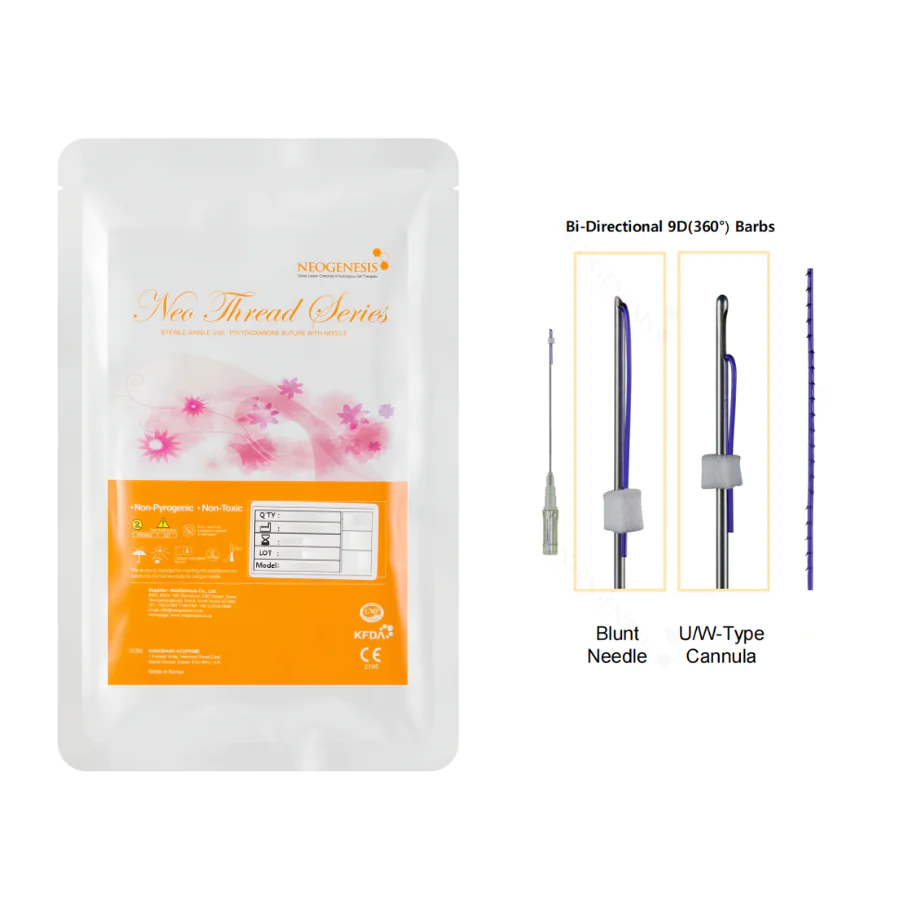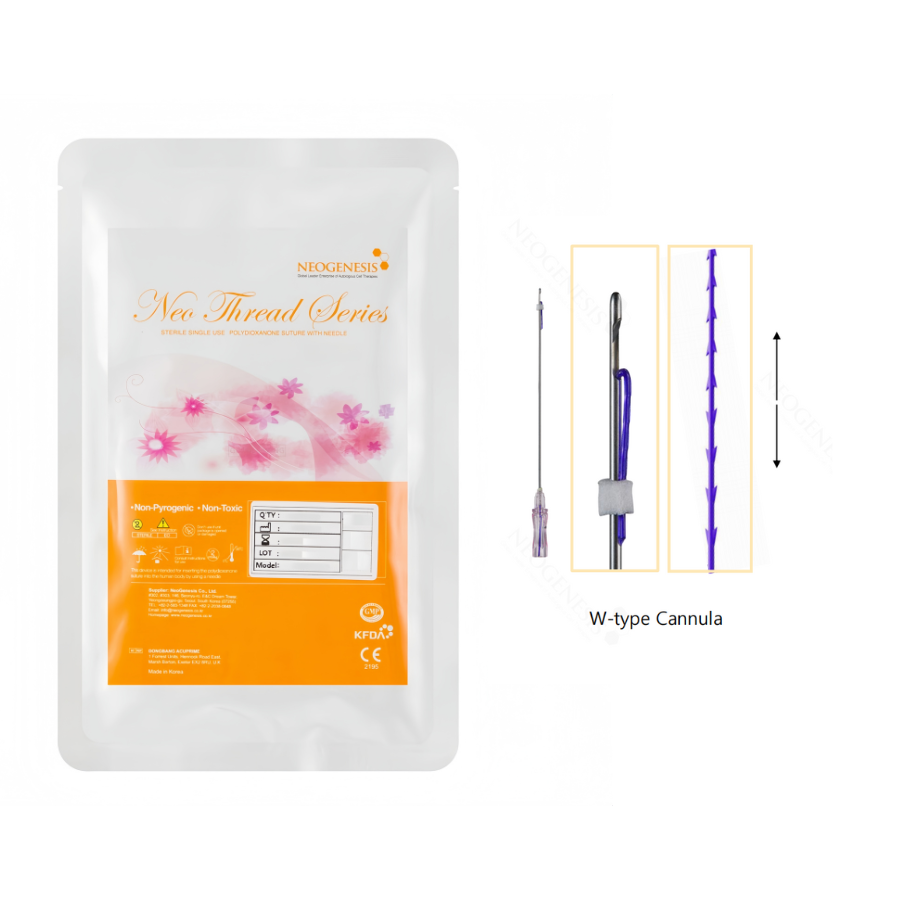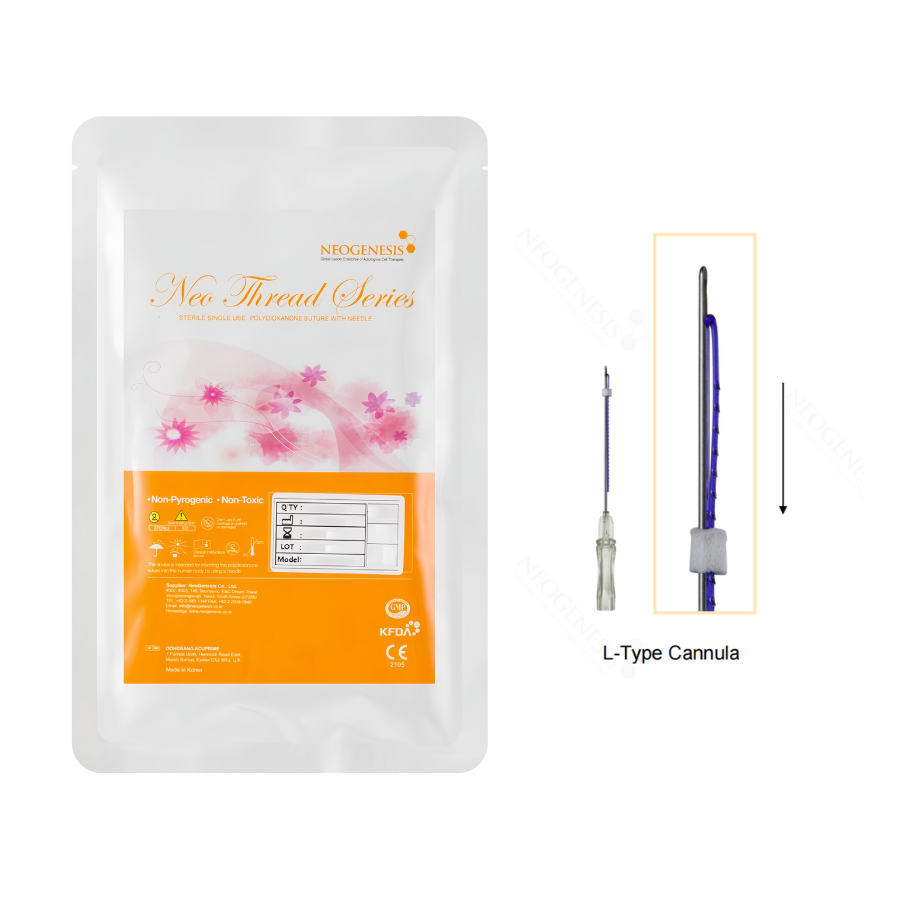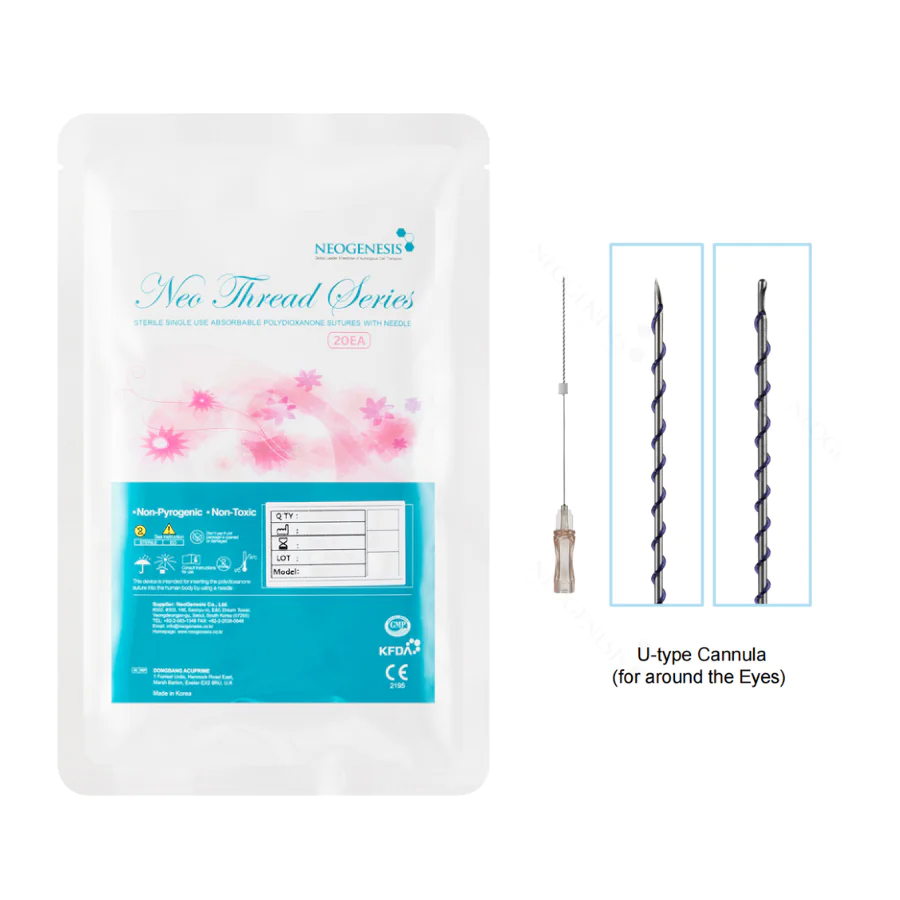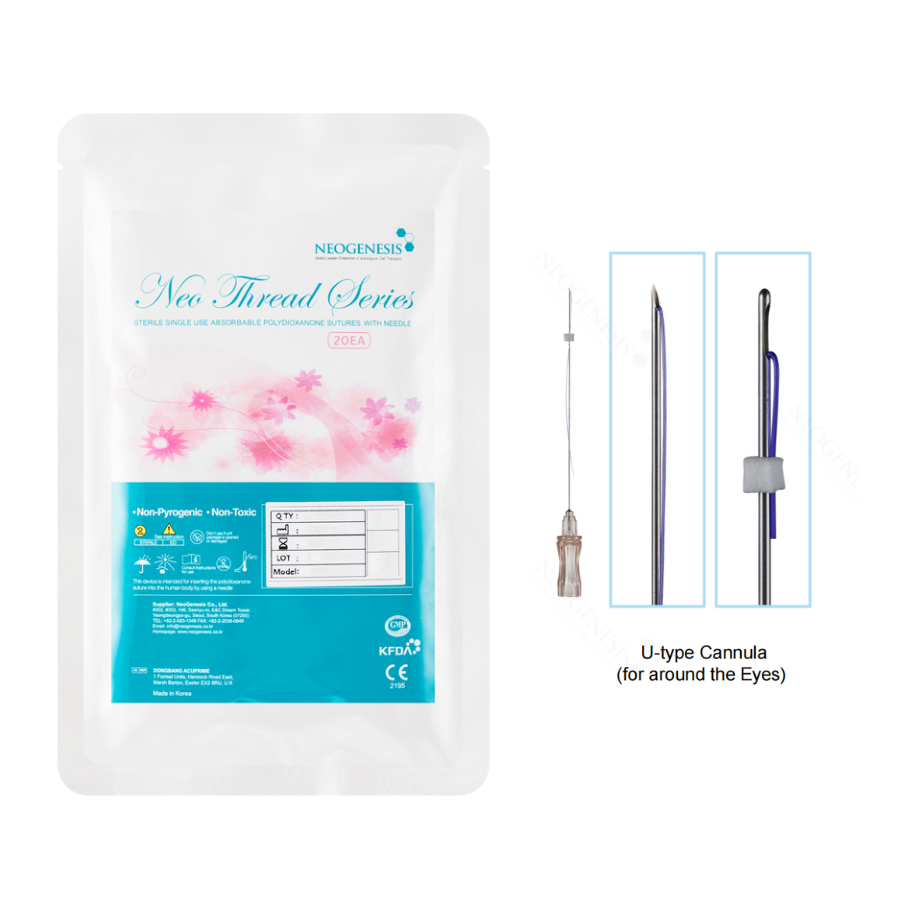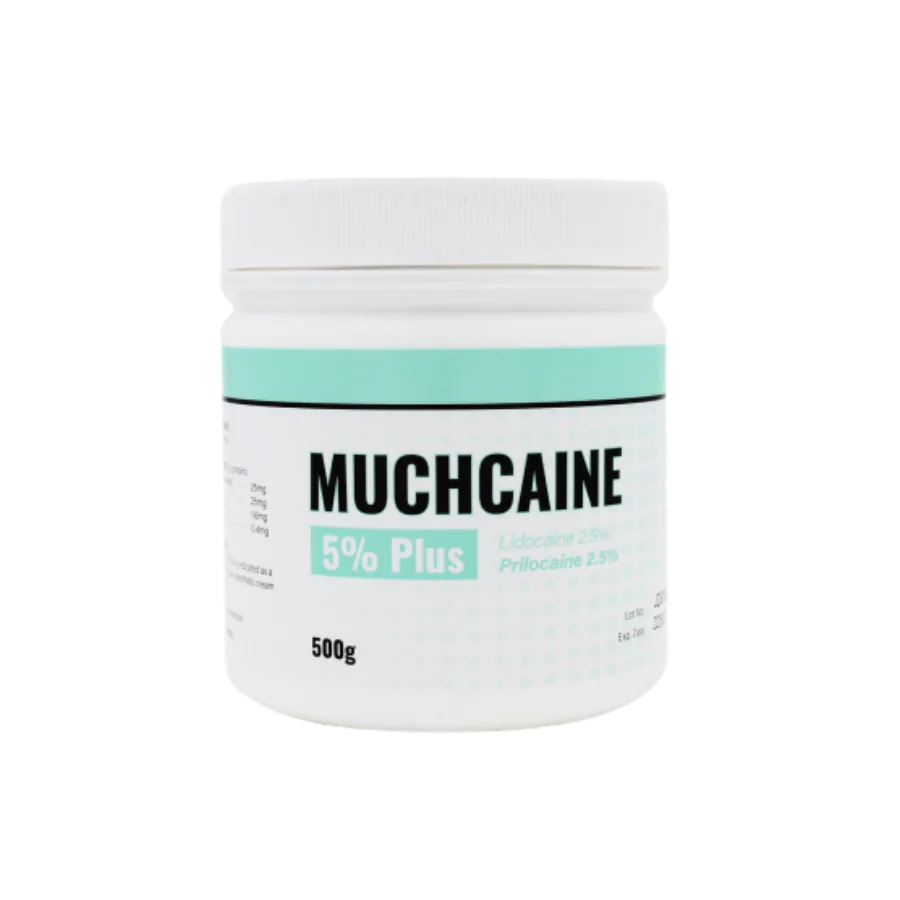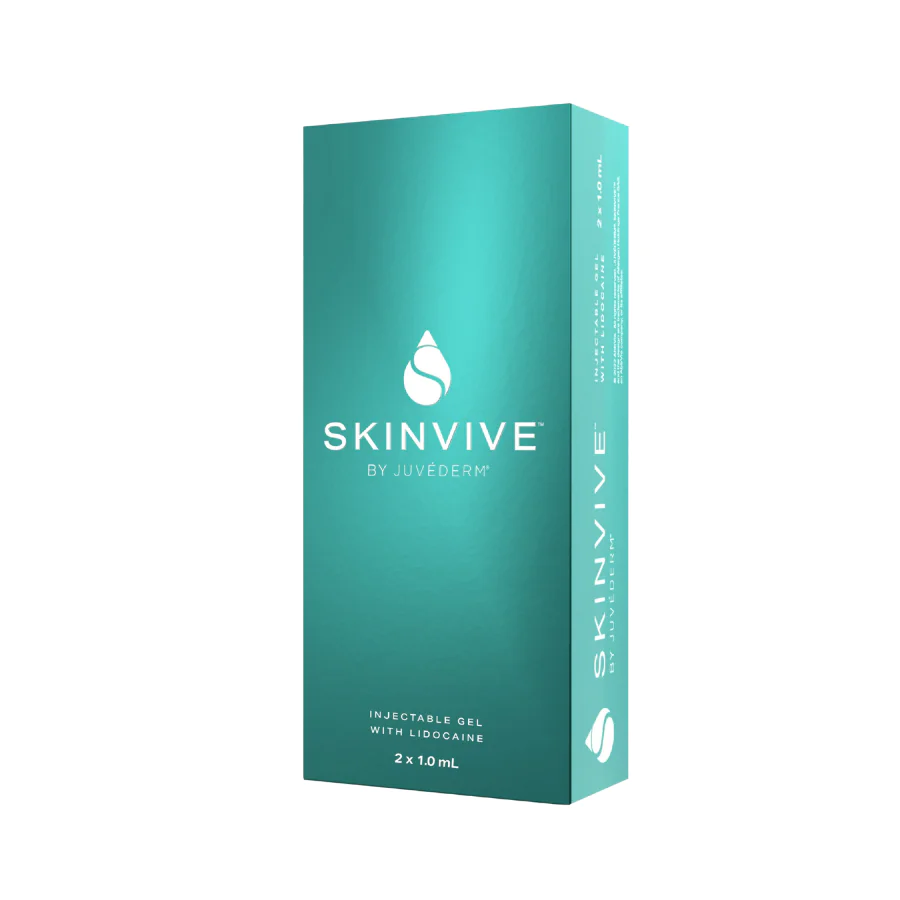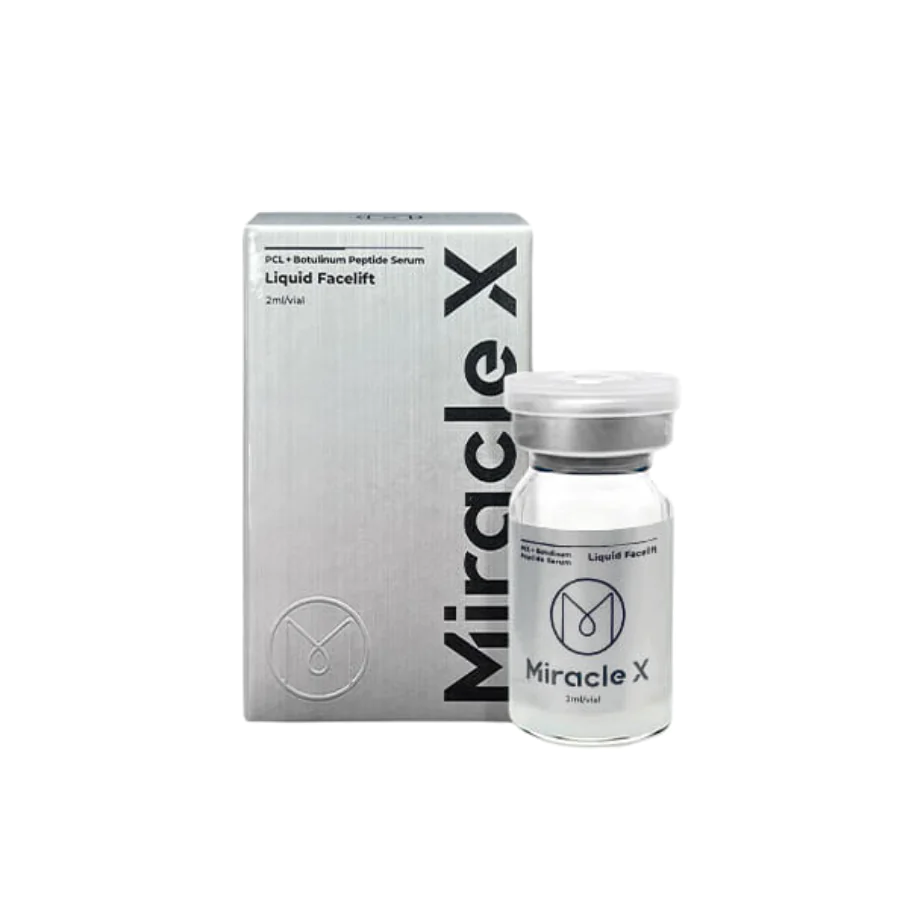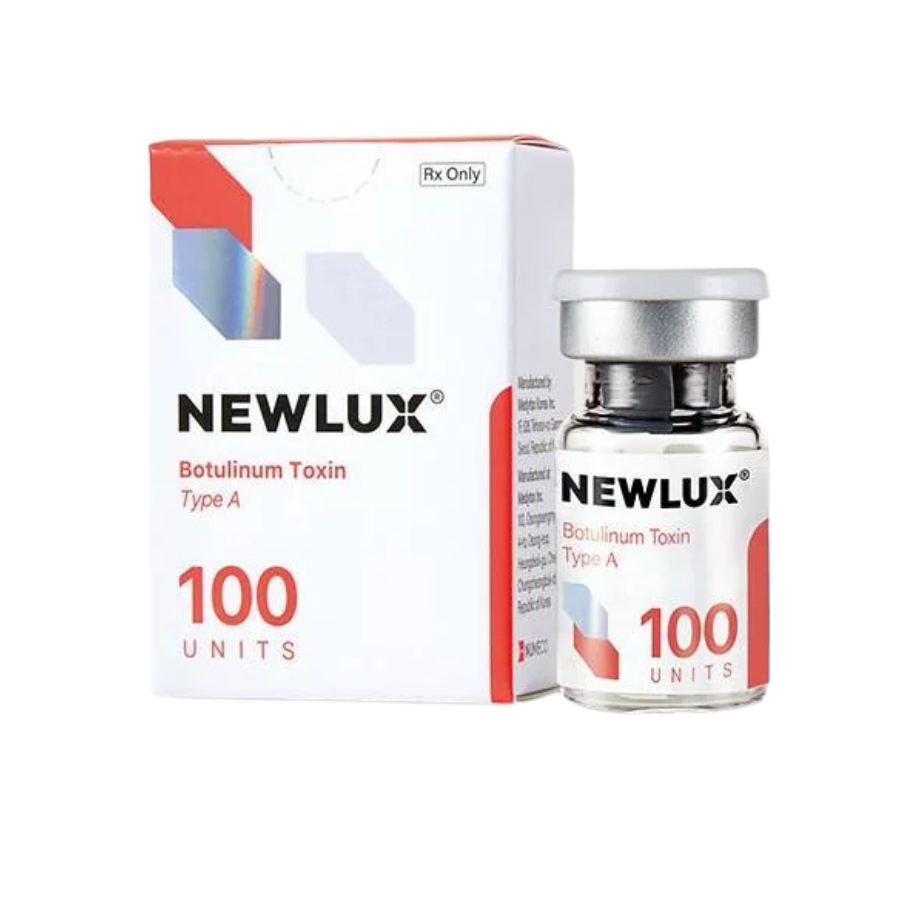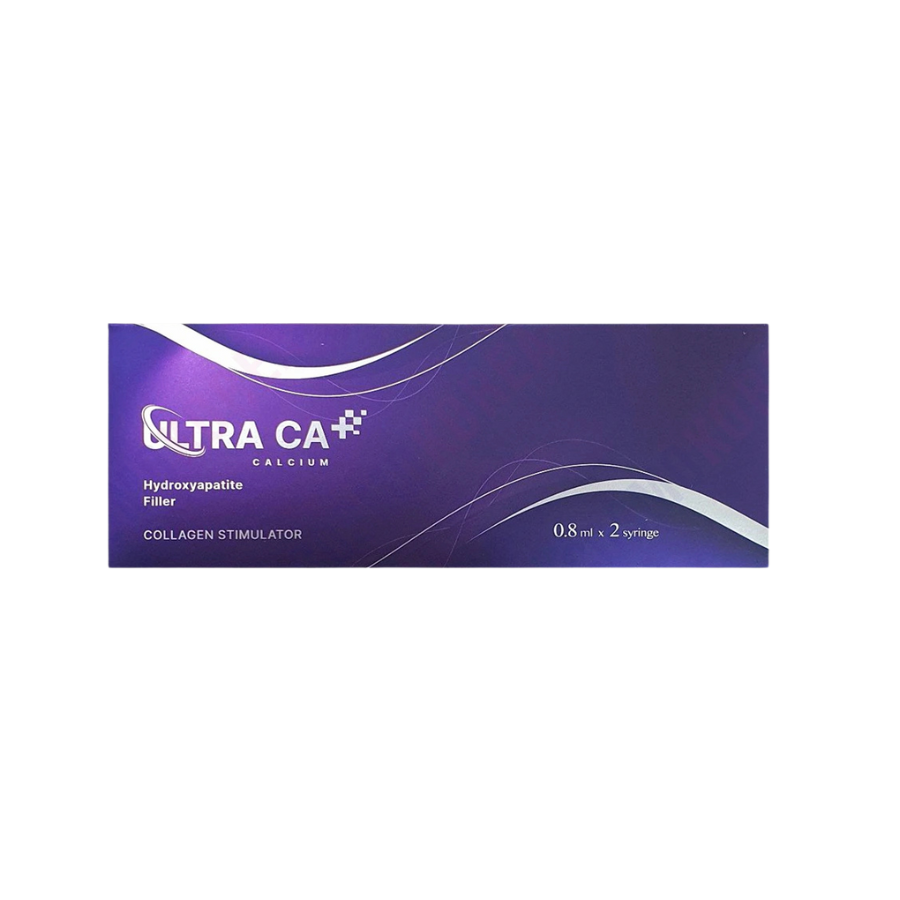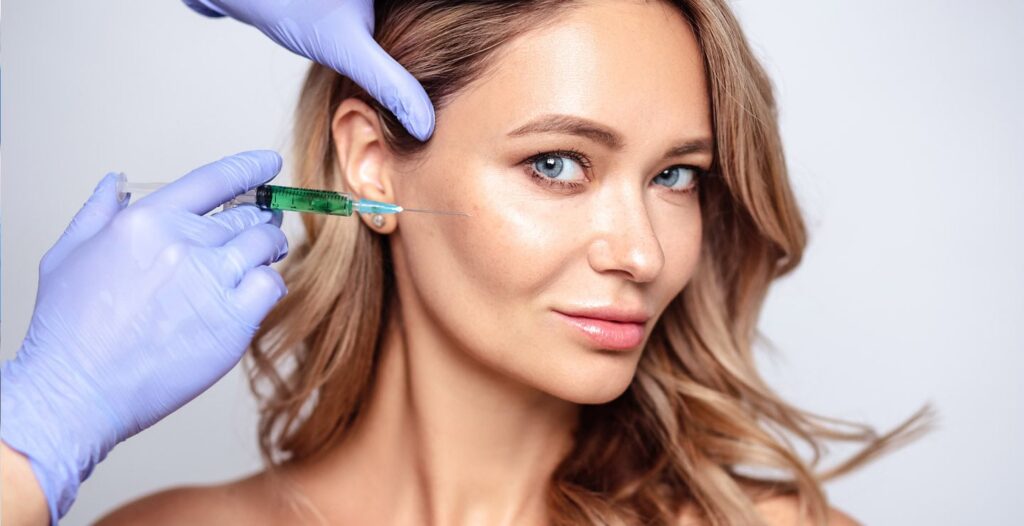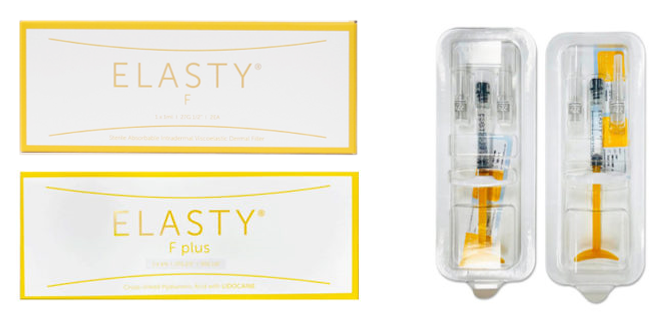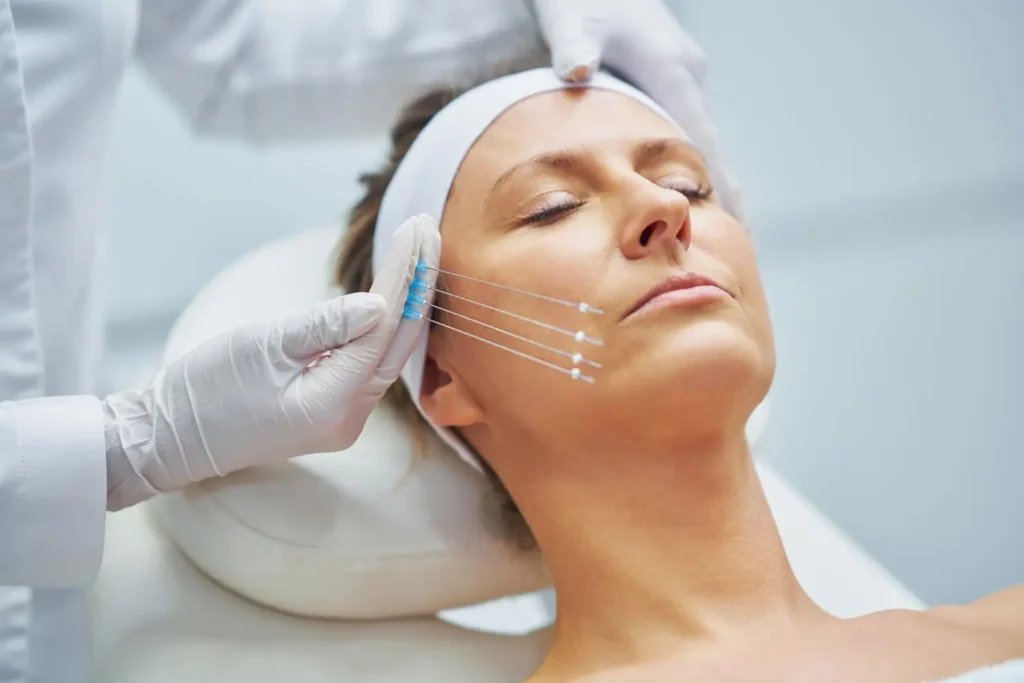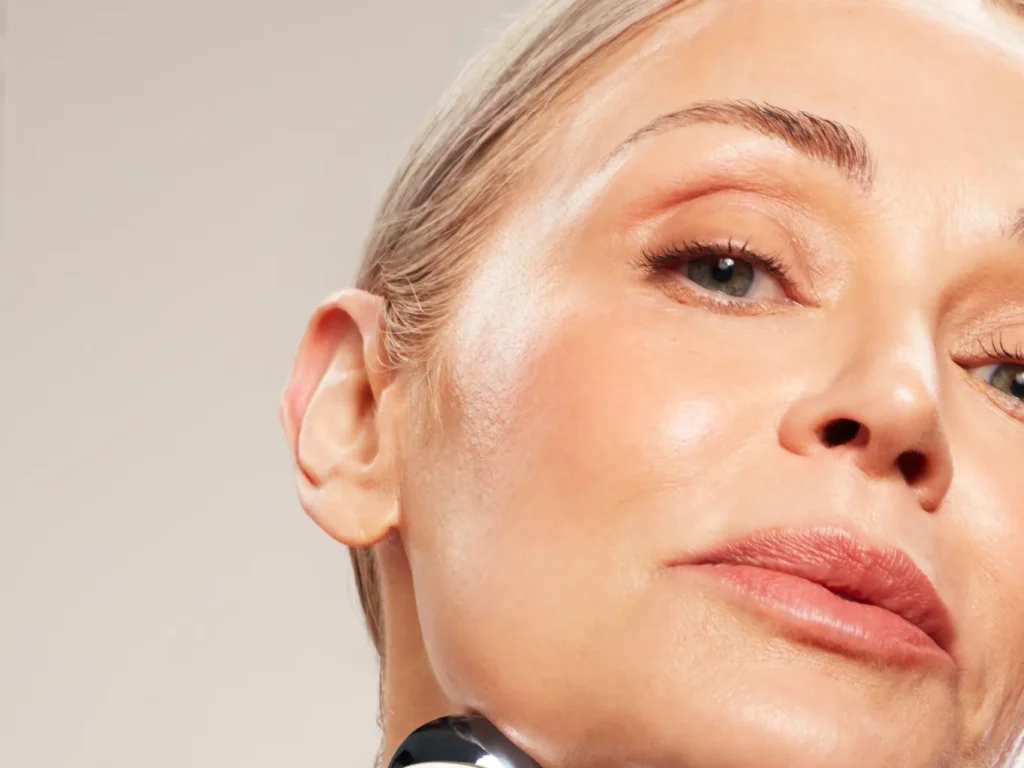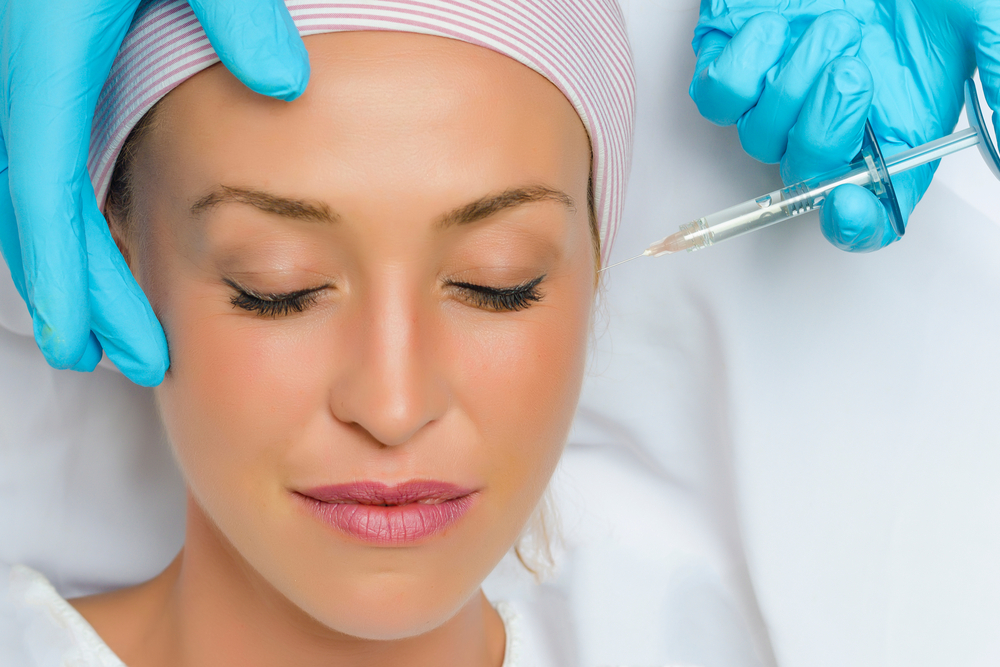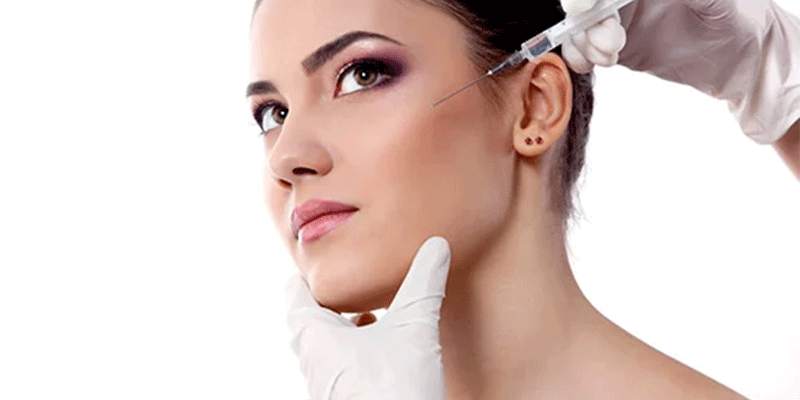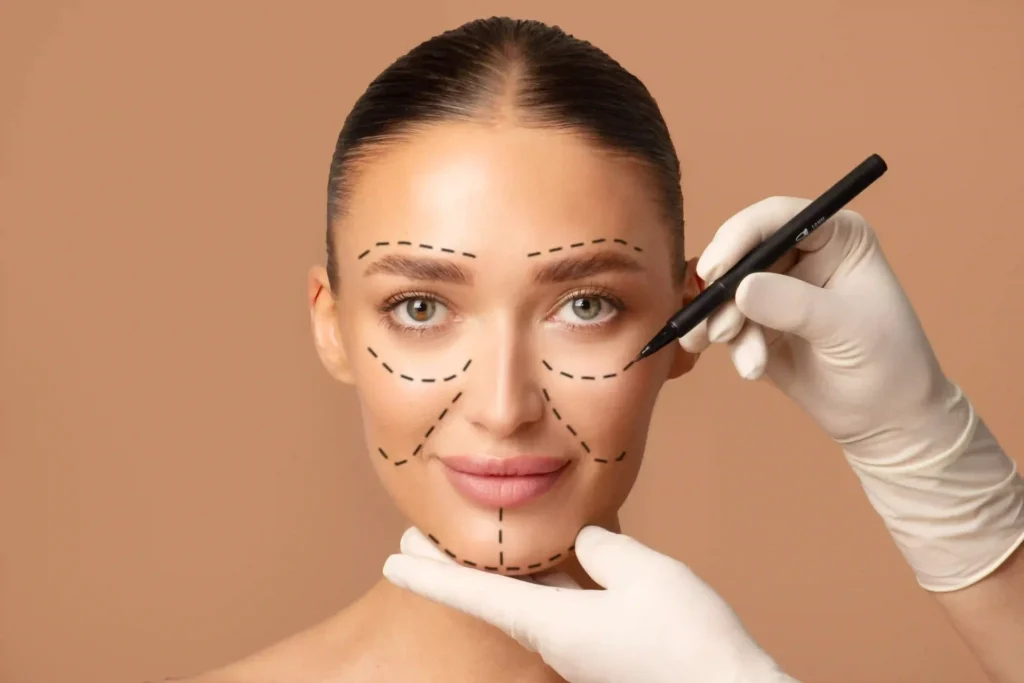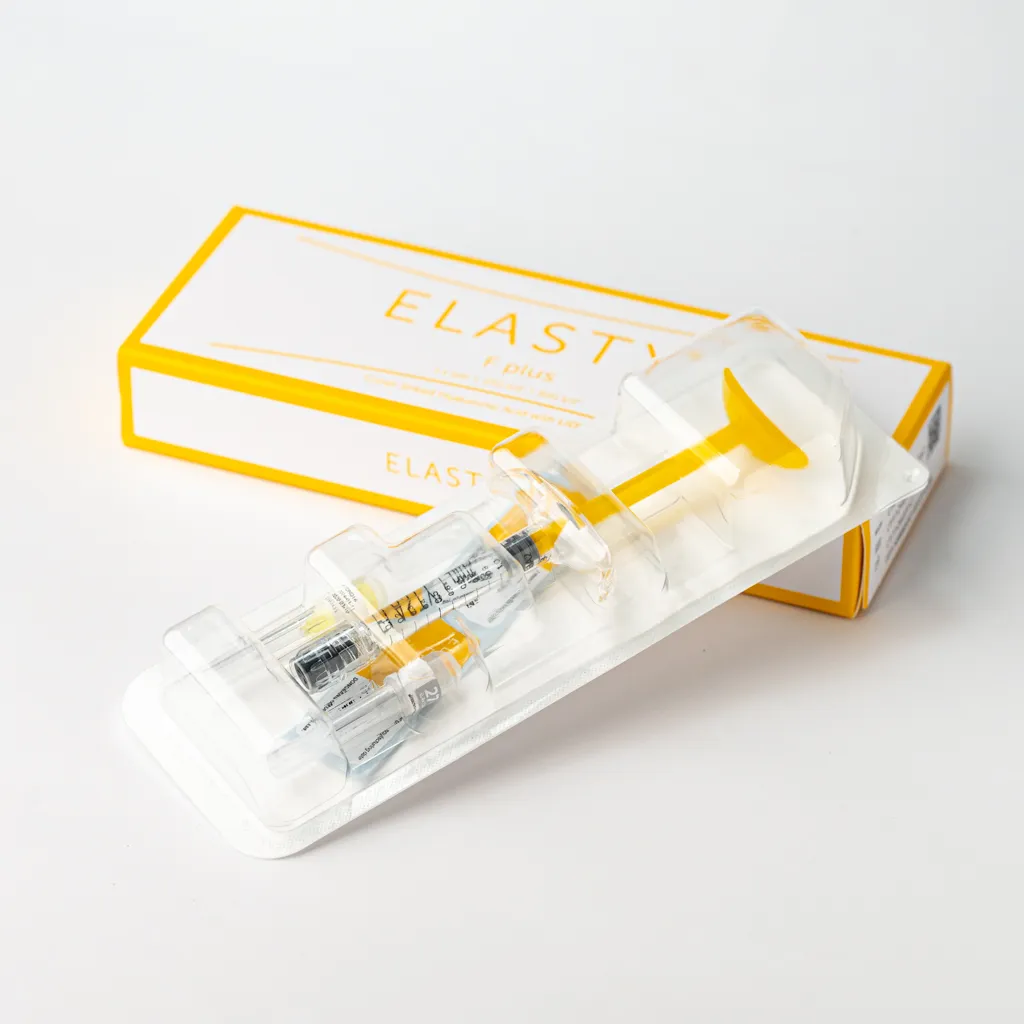Elasty Filler, developed by LG Chem, uses a high-density 24mg/mL hyaluronic acid gel to restore volume and smooth wrinkles. Clinically proven for 92% cheek augmentation satisfaction, it delivers 9–12 months of results by integrating deeply with tissue. Reversible instantly with hyaluronidase, it’s FDA-approved for nasolabial folds, lips, and contouring—prioritizing safety through precise, temporary enhancement.
Table of Contents
ToggleWhat Exactly is Elasty Filler?
Let’s cut through the jargon: Elasty Filler is a popular hyaluronic acid (HA)-based dermal filler used globally to smooth wrinkles, enhance facial contours, and restore volume lost with age. Unlike complex skincare ingredients, HA is a naturally occurring sugar in your skin that holds up to 1,000 times its weight in water. Elasty leverages this science—but with a key difference in its gel design.
Developed by LG Chem, a top Korean pharmaceutical manufacturer with 20+ years in biomaterials, Elasty uses 24 mg/mL of high-purity HA per syringe. For perspective: many standard fillers use 20–22 mg/mL. Higher HA concentration allows for more volumizing power per injection, targeting deeper folds or firmer sculpting.
| Key Properties | How It Works in Skin |
|---|---|
| Cross-Linking Tech | HA molecules are chemically bonded (“cross-linked”) to resist rapid breakdown. Elasty’s cross-linking ratio is optimized for balance—flexible enough for natural movement but structured for 9–12 month longevity. |
| Gel Viscosity | Thicker than many HAs (think honey vs. syrup). This density provides strong lifting capacity for cheeks, chin, and nasolabial folds without migrating. |
| FDA-Approved Formulation | Non-animal sourced (NASHA), biocompatible, and produced in sterile labs meeting ISO 13485 medical standards. |
Critically, Elasty is temporary and reversible. It integrates smoothly with tissues, and unlike permanent fillers, it naturally dissolves over time via the body’s enzymes. If needed, an enzyme (hyaluronidase) can dissolve it instantly—offering a safety net absent with silicone or other long-term options.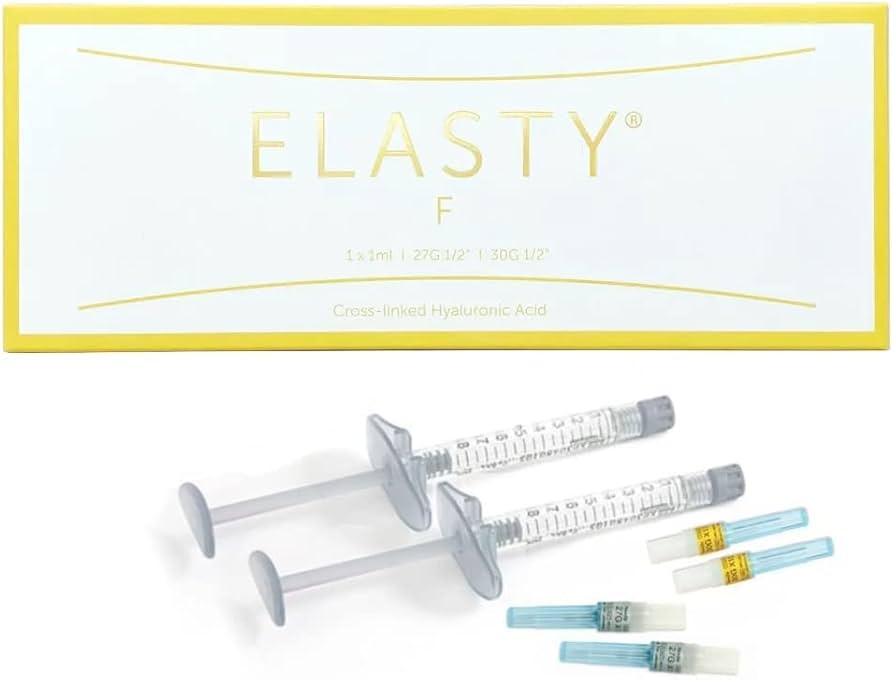
How Elasty Filler Works
Getting Elasty Filler isn’t a marathon session—it’s typically a 15 to 60-minute in-office procedure, depending on how many areas you’re treating. First, your provider will map out injection points and apply a numbing cream (like EMLA®) to the skin 20–30 minutes beforehand. Many clinics also offer ice packs or vibration devices for extra comfort. The goal is simple: make it as comfortable as possible while delivering precise results.
The magic happens with a tiny syringe (usually 27G or 30G) filled with Elasty’s smooth, cohesive hyaluronic acid gel. Your provider chooses between two application methods based on your anatomy and goals:
| Technique | Best For | How It’s Done | Key Advantage |
|---|---|---|---|
| Needle | Precision areas (lips, tear troughs) | Inserted at shallow angles near wrinkles | Targeted volume where you need it most |
| Cannula | Broad areas (cheeks, jawline) | Flexible blunt tip slides under skin tissue | Less bruising, smoother distribution |
Once injected, Elasty acts like scaffolding beneath the skin:
- Immediate Lifting: The gel physically fills space in areas where collagen or fat has diminished, like sunken cheeks or deep parentheses lines around the mouth.
- Hydration Binding: HA molecules draw moisture from surrounding tissues, plumping from within—like a sponge expanding. This softens fine lines over 1–2 weeks as hydration peaks.
- Integration: Over 14–28 days, the cross-linked HA gel integrates naturally with your skin tissue. It doesn’t migrate because its viscosity and bonding resist shifting (unlike thinner fillers).
Critical safety note: If you dislike results or notice irregularities (rare under 3% per FDA data), Elasty can be fully dissolved within hours using hyaluronidase enzyme injections. This reversibility makes it a safer starting point for first-time users than semi-permanent options.
Results appear instantly but refine over 2–4 weeks as swelling subsides and hydration peaks. Touch-ups can be done after 14 days if more volume is desired—but about 87% of patients achieve goal results in one session for moderate volume loss.
Common Uses & Target Areas for Elasty Filler
Elasty Filler isn’t a one-trick pony. While about 68% of treatments focus on restoring midface volume loss (think sunken cheeks as collagen fades post-30), its unique gel consistency makes it incredibly versatile across facial zones. Whether you’re tackling etched-in wrinkles or enhancing contours, Elasty’s medium-to-high density HA gel is optimized for precision work where tissue depth varies.
Midface Recontouring is Elasty’s bread and butter. Thick gels like Elasty excel at cheek augmentation, strategically placed along the zygomatic arch to replace bone and fat loss that flattens facial profiles. Injections often anchor below the cheekbone’s apex—too high risks an unnatural “pillow face.” Data from Korean clinical trials show a 92% patient satisfaction rate for this use when injected into the deep fat pads.
Moving down to the lower face, Elasty tackles nasolabial folds (those lines from nose to mouth corners). Its viscosity provides strong structural support at the subcutaneous layer, blending into the SMAS tissue without harsh edges. For moderate-to-severe folds (rated Grade 3-4 on the Wrinkle Severity Scale), about 0.8-1.2ml per side is typical—dosed higher than thinner fillers because it’s engineered to resist compression from facial movements.
Lip Enhancement uses a gentler approach. Only Elasty’s lighter variants (like Elasty-S) are suited for lips—injected minimally into the vermillion border to avoid sausage-like stiffness. Volume is capped at 0.5ml per lip session, layered vertically in the body of the lip rather than the margin. This maintains flexibility in these dynamic zones.
Other key applications:
- Marionette lines (sad-mouth corners): Small depot injections 1cm above the jawline lift drooping oral commissures.
- Under-eye hollows: Micro-droplets placed supraperiosteally (on bone) camouflage dark shadows. Requires ultra-fine cannula to avoid Tyndall effect.
- Chin sculpting: Fills prejowl sulcus (“dents” beside the chin) or adds projection via deep midline injections—not superficial tenting.
- Jawline definition: Reinforces mandibular angles with 1.0-2.0ml total distributed along the bone.
Zones Elasty avoids: The glabella (between eyebrows) requires stiffer fillers for immobilization. Non-surgical rhinoplasty also demands higher G-prime gels—Elasty’s flexible lift isn’t ideal for rigid nasal bridges.
What to Expect During & After Treatment
Getting Elasty Filler is typically a 30-45 minute office visit, but let’s demystify the process. Based on manufacturer data, 92% of patients report only mild pressure sensations during injections when topical numbing cream is applied. Post-treatment, 65-70% of users experience temporary swelling—this peaks around 48 hours and resolves within 3-7 days. Clinically documented bruising occurs in 30% of patients (typically small purple spots along injection paths), fading fully within 10 days.
The pre-treatment consultation is non-negotiable. Your provider will review medical history and photograph your face from multiple angles using polarized lighting. This mapping helps customize injection depths:
- Cheeks/jawline: Deposits placed deep near bone
- Lips/nasolabial folds: Mid-dermis placement
They’ll mark entry points with surgical pen and confirm your aesthetic priorities—70% of clinics now use AR imaging to simulate outcomes before touching a syringe.
First 72 hours protocol:
Day 1 often brings localized swelling described as “firm marshmallow” texture. Clinics send patients home with ice bead masks designed to wrap contours without displacement. No icing longer than 10 minutes hourly—frostbite risks dermal cells! By Day 3, 80% of edema resolves naturally. Those bruising usually show colors shifting from violet to greenish-yellow (bilirubin breakdown) near delicate eye zones.
Week 1-3 refinement phase is where the magic happens:
- Hydration plumping peaks around Day 5 as HA binds tissue fluid
- Any initial asymmetries settle as gel integrates (15% request minor touch-ups)
- Exercise resumes Day 7 once vascular leakage risk passes
Persistent tenderness beyond 2 weeks warrants a provider check for potential inflammatory nodules—rare (<2%) but addressable with steroid injections.
How Long Do Elasty Filler Results Typically Last?
Let’s get real: Elasty Filler isn’t permanent, but it’s engineered for smart longevity. Based on LG Chem’s clinical data, 84% of patients maintain visible results at 9 months post-treatment, with gradual softening after that. However, three key factors heavily influence your personal timeline: injection depth, metabolic rate, and facial movement. If you’re a fast metabolizer or have highly expressive muscles (think frequent smilers), Elasty may break down closer to 6-8 months.
Your Anatomy Plays a Role
Where the filler goes dramatically affects endurance.
🔸 Deep injections (cheekbones, jawline) integrate slowly with fat pads and bone, lasting 10-15 months as the gel shields against enzymes.
🔸 Mid-to-superficial placements (lips, fine lines) face constant muscle compression, shortening results to 4-8 months. Smokers metabolize HA 22% faster due to nicotine’s effect on hyaluronidase enzymes—a cold reality if you’re planning lip enhancement.
The Science Behind Softening
Month 1-3 is peak plumpness. Around Month 4, your body starts absorbing water-bound HA molecules (~0.02% daily).
⚖️ But here’s the win: the cross-linked gel core remains intact, preserving structure even as surface hydration fades. By Month 9, ~60% of the filler remains active—just subtly “settled” into tissues.
Your Longevity Timeline Visualized:
- Weeks 1-12: Optimal fullness (95-100% gel volume)
- Months 4-6: Hydration decline → softer look, ~20% volume loss
- Months 7-9: Stable “core support” phase → lifts/smoothing still evident
- Months 10+: Gradual structural breakdown → touch-ups advised
Pro Tip: Collagen stimulation kicks in around Month 6. The temporary inflammation from injections sparks natural collagen production—meaning even as Elasty dissolves, your skin might still look plumper than pre-treatment.
Extending Your Investment
🔹 ”Tweak-ments” (0.1-0.3ml touch-ups every 6-9 months) require less product than initial sessions.
🔹 SPF 50+ daily use slows collagen degradation by up to 40%—making results appear more durable.
🔹 Hyaluronic acid serums won’t replace filler but can amplify skin hydration to delay perceived fading.
Ultimately, Elasty finds its sweet spot at 8-12 months for most patients—long enough to feel worthwhile, temporary enough to let you refine your look as trends or aging progress.
Important Things to Know Before Getting Elasty Filler
Let’s set realistic expectations: nearly 1 in 5 potential patients get screened out during consultations, often due to unexpected contraindications. According to 2023 clinical safety reports, autoimmune conditions like lupus, recent dental work (within 30 days), or active infections increase complication risks by up to 47%. Even over-the-counter supplements—like fish oil, vitamin E, or ginkgo—need pausing 1 week prior since they heighten bruising risk.
Medical Eligibility Isn’t Just Paperwork
Your immune history matters profoundly. If you’ve ever had facial cold sores (herpes simplex), providers typically prescribe Valacyclovir prophylaxis—oral antivirals taken 2 days pre-treatment. Why? Filler-triggered outbreaks occur in 3% of untreated cases. Similarly, uncontrolled diabetes (HbA1c >7%) slows healing and increases infection risk. Rheumatoid arthritis patients face a 9x higher risk of granulomas, making Elasty ill-advised without rheumatologist approval.
“Any injector who skips a vascular occlusion emergency kit isn’t qualified to touch your face. Hyaluronidase must be in the room, not down the hall.”
— Dr. Marcus Tan, Aesthetic Safety Coalition
Choosing Your Provider: Beyond Certifications
A license isn’t enough. Prioritize clinicians who:
- Show before/after portfolios of at least 50 Elasty cases (ask about their needle-to-cannula technique ratio)
- Use dynamic assessment tools like Doppler ultrasound for patients with filler history
- Disclose complication rates transparently—industry benchmarks hover around 2.8% for serious side effects like vascular occlusion
Rural U.S. state data reveals 68% of vascular events occur with non-core practitioners (dentists, NPs without facial anatomy fellowships). For dense zones like the glabella or temples, a provider’s cannula certification is non-negotiable.
Understand the Real Investment
Elasty averages 600–1,200 per syringe regionally, but here’s what clinics rarely volunteer:
- Full cheek restoration requires 2–3 syringes ($1,800+), not the “mini syringe specials” promoted on social media
- 88% of patients seeking lip augmentation need touch-ups at 3–5 months, adding 350–600 per session
- Travel costs if dissolving complications arise—only 22% of clinics stock hyaluronidase for emergencies
Psychological Readiness Is Crucial
Day 3 post-treatment is when 65% of patients panic. Swelling distorts symmetry, and bruises resemble inkblot tests. Seasoned injectors advise:
“Bring your ‘ugly selfie’ from a bad angle pre-treatment. Comparing Day 3 to that original photo stops 80% of emergency calls.”
If you’ve struggled with body dysmorphic disorder (BDD), fillers can amplify fixation—research shows 41% of BDD patients request revisions beyond anatomical limits.
Ultimately, Elasty delivers best when you:
- Stop blood thinners/supplements 7 days pre-procedure
- Schedule around major events (allow 14-day buffer)
- View Year 1 as a partnership—not a one-time “fix”

